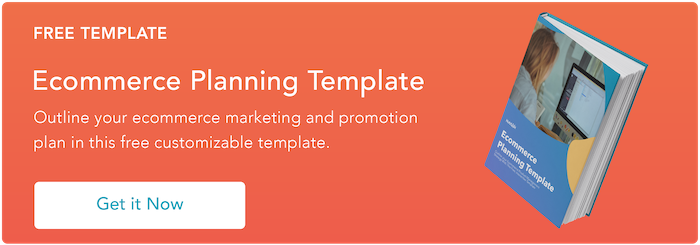These tips are mainly directed at ecommerce businesses. However, many of them apply to all businesses looking to optimize their website as their traffic and sales increase. Let's get started.
Traffic Management
One of the biggest concerns for marketers and respective IT folks around this holiday is a surge in traffic. Many websites see double or triple the amount of traffic they get during other times of the year, and it all happens over the course of a few days. So how do you ensure your website is ready for all of the impending visitors?
1. Contact your CDN provider.
If you utilize a Content Delivery Network (CDN), check with your IT team to ensure they have reached out to the CDN provider and planned for the increased traffic.
There are two possible ways you could be using a CDN.
First, you might be using a platform that comes with a built-in CDN. If you use Content Hub to host your website, for example, you'll already have a built-in CDN. With this built-in, Content Hub is set up to handle around 1,000 page views per second to a website, which translates into 3.6 million page views an hour or about 86 million page views a day. You should still let your Customer Success Manager know ahead of time if you’re expecting an unusually large surge of traffic to your site on Black Friday.
If you're using a platform that doesn't come with a built-in CDN, you might have a contract with a third-party CDN provider like Amazon CloudFront. In that case, you'd reach out to them so they can plan for a surge in traffic to your site.
2. Consider upgrading your server.
If you don't utilize a CDN, talk to your web hosting provider and inquire about the traffic limitations and cost of an upgraded server. Generally a better server can help handle increased traffic and sustained volume.
Before you agree to anything, make sure you ask about the time it will take to get the new server and any procedure to move over. You will want to be sure your website and content is on the new server before Black Friday to reap the benefits of increased page speed and minimized bandwidth consumption.
Website Speed
Almost half of all online consumers will abandon a page that takes more than 2 seconds to load. Such a high abandonment rate would be devastating on Black Friday.
So, how can you ensure your website loads as quickly as possible? There are a few last-minute things you can do to reduce your website's load time.
While there are more complex, longer-term changes you can make to improve the speed of your website, the changes below are limited to relatively quick actions that can help measurably improve the load time of your website for Black Friday.
3. Compress and resize images.
If you have any images — especially on your homepage and popular product pages — make sure they are sized appropriately. For example, say you uploaded a large, high resolution image of one of your products. Even if it's only displaying as 500 x 500 pixels on the page, the browser still has to load the entire original image.
Once you've sized your images correctly, you can further reduce page weight by compressing them. Compressing images is easy thanks to tools like squoosh.app.

If you don't have time to check through your entire site, we'd recommend at least going through the images on your homepage and top product pages to ensure they are optimized.
4. Reduce or remove unnecessary third-party snippets.
Third-party snippets that display content from another service take up valuable time to load. If you have any scripts on your website from a service that you're no longer using, remove them. To do so, talk to your IT team about ensuring these are no longer on your website.
5. Cache your web pages.
One of the most effective ways to improve load time is a process called "caching." Caching stores prepared copies of your site's files in a readily accessible place in your server known as its Random Access Memory (RAM). That way, every time a consumer visits your site, your server doesn't need to retrieve all the relevant content from your database, assemble it into an HTML file, and send it to the browser to display to the visitor. Instead, it will just send the cached file to the visitor's browser.
So your server will still have to do some work to load a page, but it will require fewer resources and speed up the whole process.
You can cache your web pages in a few different ways. A popular option for WordPress websites is to use a caching plugin like W3 Total Cache.
If you're not on WordPress, there are plenty of other caching tools and services available, like Varnish and Amazon ElastiCache.
6. Break up long posts into multiple posts.
If you’ve implemented the steps above and are still seeing high load times on some of your web pages, they might simply have too much content.
Since lengthier posts with lots of images and dynamic information will take longer to load, you might consider breaking them up into multiple pages. With the right internal linking strategy, you can divide up your pages to improve your page speed without negatively impacting the user experience.
Trust & Security
One of the key concerns of today's online shoppers is ensuring their personal information is going to stay safe. We've covered a few key elements of trust below to help you ensure conversion rates are as high as possible for Black Friday.
7. Enable SSL.
Secure Sockets Layer (SSL) is a technology that encrypts the connection between your visitor's browser and your website. Visitors can tell if a website has SSL by its URL. It will begin with https:// instead of http://.
This one letter can help them feel safer providing their personal information on your site, especially during the checkout process.
Some website building platforms offer SSL so you don't have to worry about purchasing and installing an SSL certificate on your site. Any website hosted on Content Hub will automatically get an SSL certificate, for example. Other platforms, like WordPress, don't have SSL built-in, but many WordPress hosting providers do offer it as part of their hosting packages.
If your platform or provider does not offer SSL, then you can purchase one or download it for free. Check out a list of the best free or low-cost SSL certificate issuers.
8. Display safe checkout badges and other trust badges.
A trust badge is a symbol or seal that indicates to visitors and potential customers on a website that their information will be safe. These badges are often found on checkout pages, but you can also find them on homepages and landing pages.
The most popular type of trust badge is the safe checkout badge. This seal is often given by SSL providers or payment processing platforms. For example, if you Stripe payments plugin for Wordpress, then you can add the following safe checkout badge to your checkout page.

9. Ensure your return policy is clear and easy to find.
Some shoppers like the added peace of mind that they can return an item if it doesn't meet their needs.
To ease any concerns, make sure your return policy is clearly stated and easy to find on your website. The ecommerce site Stalf is a great example. "Returns" is one of the options in its drop-down navigation menu on its homepage.

Search Engine Optimization
Organic search can help generate additional sales from visitors looking for a specific item, but unsure of where to find it. While an SEO strategy takes time to implement, this audit is meant to address any significant omissions that could help contribute to more organic traffic and sales on Black Friday.
10. Optimize for specific keywords.
If you don't have time to go through all your assets and ensure everything is perfect, you should aim to make sure that your homepage and key product pages are optimized. To optimize for specific keywords, focus on including them in: titles, descriptions, headings, body content, URLs, and image alt text.
If you utilize a lot of imagery on your product pages, alt text is very important. To improve your site's crawlability, be sure to go through all of your images to add alt text that is relevant to the item and ties back to the keyword(s) you're optimizing for.
To learn more about keyword optimization, check out On-Page SEO 101: Tips for Keyword Optimizing the Most Critical Parts of Your Website.
11. Optimize for mobile devices.
According to data from the National Retail Federation about Thanksgiving weekend in 2019, a record 189.6 million U.S. consumers shopped and spent more over the five-day period than the year before — and mobile devices played a significant role. 75% of these consumers used mobile devices to research products, compare prices, or make purchases.
While optimizing your website for mobile users will take a considerate amount of planning and time, you can take small steps now to improve the mobile experience before Black Friday. Increasing the size of your buttons and font, for example, can better accommodate people using touchscreens versus a mouse.
Preparing Your Website for Black Friday
You want to provide the best experience to your visitors every day — but especially on Black Friday. Following the steps above will ensure your site is optimized for traffic, speed, security, and search.
For a more in-depth look at on-page optimization, download this free SEO template to organize and implement your strategy.
Ecommerce









.jpeg)

